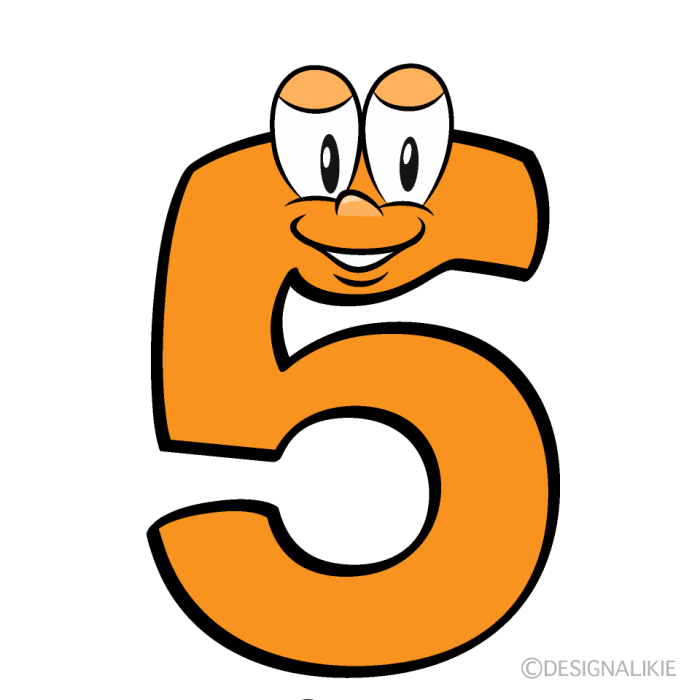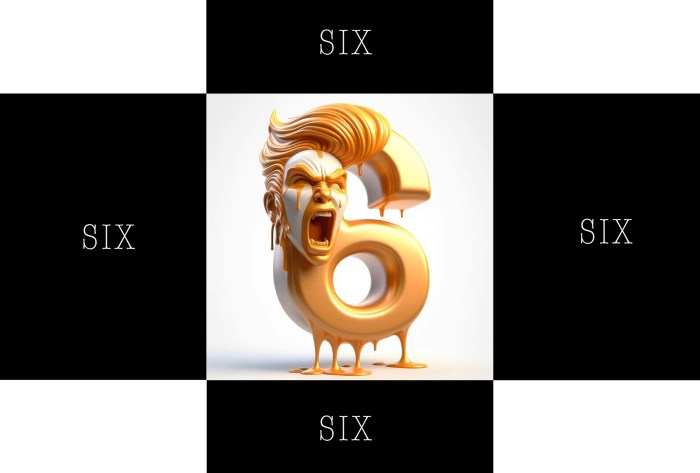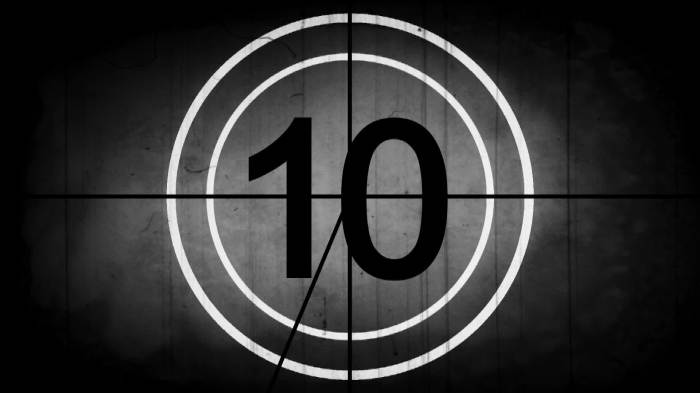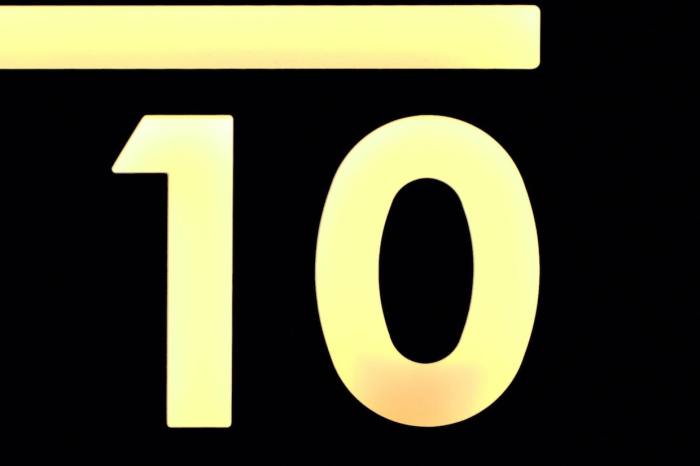What to do when you just cant make the decision – What to do when you just can’t make the decision sets the stage for this enthralling narrative, offering readers a glimpse into a story that is rich in detail. This deep dive explores the often-overlooked complexities of decision-making paralysis. We’ll unpack the root causes, from internal anxieties to external pressures, and equip you with practical tools and techniques to navigate the maze of indecision.
From understanding the psychological drivers behind procrastination and indecisiveness to mastering decision-making frameworks, this guide will illuminate various approaches. We’ll also discuss managing emotions, reducing information overload, and building the confidence to make choices, whether big or small. Real-world examples and actionable exercises will round out this comprehensive guide to reclaiming control over your decision-making process.
Understanding the Root Cause
Decision-making paralysis, that frustrating feeling of being stuck in a loop of indecision, can stem from a variety of internal and external pressures. Understanding the underlying causes is crucial for developing effective strategies to overcome this challenge. Often, the issue isn’t the decision itself, but rather the emotional and psychological factors surrounding it.This often goes deeper than simply needing more information.
It’s about recognizing the anxieties, fears, and ingrained patterns that contribute to the struggle. Identifying the root cause is the first step toward reclaiming control and making confident choices.
Potential Reasons for Decision-Making Struggles
Decision-making difficulties can stem from a complex interplay of internal factors and external pressures. Recognizing these factors is the first step towards effective solutions.
- Fear of failure: The fear of making a wrong choice can paralyze decision-making. This fear often stems from past negative experiences, societal pressures, or a fear of judgment. For instance, a student might avoid choosing a major because they fear not succeeding in their chosen field.
- Perfectionism: The pursuit of flawlessness can be a significant obstacle. Individuals striving for perfection often delay decisions, meticulously analyzing every detail, ultimately leading to analysis paralysis. This can be seen in a writer who spends weeks editing a single paragraph, unable to move on to the next.
- Information overload: Surrounding oneself with too much information can be overwhelming. The sheer volume of choices and possibilities can lead to a feeling of being lost and confused. This is particularly true in situations with many options and factors to consider, like purchasing a complex product or choosing a career path.
- Low self-esteem: Individuals with low self-esteem may doubt their ability to make sound judgments. This lack of confidence can lead to avoidance and a reluctance to commit to a decision. An example would be someone who repeatedly cancels plans because they feel their choices aren’t good enough.
- External pressures: External factors such as social expectations, financial constraints, or relationship dynamics can significantly impact decision-making. A person may delay choosing a career path because of family pressure to pursue a certain field.
- Procrastination vs. Indecisiveness: While procrastination involves delaying a decision, indecisiveness is about the difficulty in making the decision in the first place. Procrastinators may know what to do but put it off; indecisive individuals are struggling with the decision-making process itself. The underlying psychological driver in procrastination is often fear of failure or a desire to avoid the task. In contrast, indecisiveness is rooted in the internal struggle of assessing options and choosing among them.
This struggle can be caused by a variety of factors, including perfectionism, fear of making mistakes, and a lack of confidence in one’s ability to make sound judgments.
Identifying the Core Issue
Strategies for identifying the root cause of decision-making paralysis often involve introspection and self-assessment.
- Journaling: Regular journaling can help individuals become more aware of their thought patterns and emotional responses to decision-making scenarios. Note the specific situations that trigger indecision, and the feelings associated with those situations. This can reveal patterns or underlying fears.
- Self-reflection: Engage in mindful self-reflection to examine the potential contributing factors. Consider the role of past experiences, personal values, and current emotional state. Ask yourself: what specific feelings or thoughts come up when you face a decision?
- Seeking support: Talking to a therapist or counselor can provide valuable insight and guidance. They can help you explore underlying issues and develop coping strategies. Support from a trusted friend or family member can also be beneficial.
Categorizing Decision-Making Challenges
A framework for categorizing decision-making challenges can help individuals understand the specific obstacles they face.
| Category | Description | Example |
|---|---|---|
| Fear of Failure | The fear of making a wrong choice, often stemming from past negative experiences or societal pressures. | Refusing to apply for a job because of fear of rejection. |
| Perfectionism | The pursuit of flawlessness, leading to excessive analysis and delay in decision-making. | Spending hours editing a document, unable to finalize it. |
| Information Overload | Being overwhelmed by the sheer volume of choices and possibilities. | Struggling to choose a college major with numerous options. |
| Low Self-Esteem | Doubt in one’s ability to make sound judgments. | Hesitating to express an opinion in a meeting due to fear of being wrong. |
| External Pressures | Social expectations, financial constraints, or relationship dynamics that influence decision-making. | Choosing a career path based on parental expectations rather than personal interests. |
Decision-Making Tools and Techniques
Facing a difficult decision can feel overwhelming. It’s often not enough to simply understand the root cause of your indecision; you need practical tools to navigate the process. This section explores various methods to approach challenging choices, from simple lists to more complex models, and how to use a decision journal to track your progress.Understanding different decision-making styles and their associated challenges can help you recognize your own tendencies and adjust your approach accordingly.
By employing these techniques, you can move from feeling stuck to confidently making informed choices.
Pros and Cons Lists
A pros and cons list is a straightforward method for evaluating the potential benefits and drawbacks of different options. Listing the positive and negative aspects of each choice helps to clarify the advantages and disadvantages, making the decision-making process more transparent and manageable.
- Format: Create a table with columns for “Option,” “Pros,” and “Cons.”
- Example: Consider purchasing a new car. Option A: A used sedan, Option B: A new SUV. List the advantages and disadvantages of each in separate columns.
- Benefits: This method forces a structured analysis, promoting a clearer understanding of the implications of each choice.
- Limitations: It may not be sufficient for complex decisions requiring a more in-depth evaluation.
Decision Matrices, What to do when you just cant make the decision
Decision matrices provide a more structured approach to evaluating options by assigning weights to different criteria. This helps you to quantify the importance of various factors and choose the option that best aligns with your priorities.
- Format: Create a table with rows representing options and columns representing criteria. Assign weights to each criterion and score each option based on its performance on each criterion.
- Example: Choosing a job offer. Criteria could be salary, company culture, and location. Assign weights to each criterion and score each offer based on these criteria.
- Benefits: Helps quantify subjective factors, making the decision more objective and rational.
- Limitations: Requires careful consideration of weights and can be time-consuming for complex decisions.
Weighing Options
This method focuses on systematically comparing different choices based on a range of factors. This involves explicitly defining the criteria for evaluating options and then assessing each option against these criteria. This structured comparison clarifies the strengths and weaknesses of each choice, enabling a more informed decision.
- Process: Identify key factors or criteria, and rate each option based on its performance in each category. Consider factors like cost, time commitment, and potential outcomes.
- Example: Deciding where to go on vacation. Factors could be budget, desired activities, and travel time. Rate each destination based on how well it matches these factors.
- Benefits: Offers a comprehensive view of different options by analyzing them against a set of predetermined criteria.
- Limitations: The success of this method depends on the thoroughness of the criteria chosen.
Decision Journal
A decision journal is a valuable tool for tracking your thought processes and decision outcomes. It helps you understand the rationale behind your choices and identify patterns in your decision-making style.
- Format: Include the date, the decision you faced, the options considered, the criteria used for evaluation, the final decision, and the outcome.
- Benefits: Provides a record of past decisions, allowing you to learn from your experiences and improve future choices.
- Example: When deciding between two job offers, record the details of each offer, the factors considered (salary, location, company culture), the final decision, and how the choice turned out.
Applying a Decision-Making Model (Example: Rational Choice Theory)
Rational Choice Theory is a decision-making model that assumes individuals are rational actors who make decisions based on maximizing their own self-interest. This model involves identifying the available options, evaluating the potential consequences of each option, and choosing the option that best aligns with your goals.
- Identify the decision: Define the specific problem or choice you need to resolve.
- Gather information: Collect all relevant data and information about the options available.
- Define criteria: Establish the factors or criteria you will use to evaluate each option.
- Evaluate options: Assess each option against the established criteria.
- Make a decision: Select the option that best aligns with your goals and criteria.
- Monitor and evaluate: Track the outcome of your decision and adjust your approach as needed.
Decision-Making Styles
Different individuals approach decisions with varying styles. Understanding your style can help you identify potential challenges and adapt your approach accordingly.
- Impulsive: Decisions are made quickly without much consideration of potential consequences. Challenges: May lead to poor choices due to a lack of thorough analysis.
- Cautious: Decisions are made slowly and meticulously, considering all potential outcomes. Challenges: May lead to analysis paralysis and difficulty making a timely decision.
- Analytical: Decisions are made by thoroughly evaluating data and considering various perspectives. Challenges: May take a considerable amount of time to reach a conclusion.
Overcoming Emotional Barriers
Decision-making is often more complex than simply weighing pros and cons. Emotions like anxiety, fear, and regret can significantly cloud judgment and lead to poor choices. Understanding and managing these emotional responses is crucial for making sound decisions. This section explores techniques for identifying and overcoming these emotional barriers.
Common Emotions Hindering Decision-Making
Identifying the specific emotions influencing your decisions is the first step in overcoming them. Common emotions that hinder decision-making include anxiety, fear, regret, and indecisiveness. Anxiety stems from the unknown and potential negative outcomes. Fear is often rooted in the perceived threat of loss or failure. Regret arises from past choices or missed opportunities.
Sometimes, making a decision feels impossible. It’s completely understandable! Fortunately, sometimes the best approach is to step back and consider the bigger picture. For example, exploring the revolutionary share economy, like important things know about the revolutionary share economy , can help you see new possibilities and make choices that align with your long-term goals. Ultimately, taking a break and reflecting can help you make a decision you’re happy with, even when it feels overwhelming.
Indecisiveness is a state of uncertainty that delays or prevents decision-making altogether. Recognizing these emotions as part of the decision-making process allows for more effective strategies to manage them.
Techniques for Managing Emotions During Decision-Making
Several techniques can help manage emotions during the decision-making process. These include mindfulness, reframing negative thoughts, and seeking support from trusted individuals. By actively addressing emotional responses, you can create a more rational and productive decision-making environment.
Mindfulness Practices for Emotional Regulation
Mindfulness practices can foster emotional regulation during decision-making. These practices involve focusing on the present moment without judgment. Mindful breathing, body scan meditations, and mindful walking are examples of techniques that can help calm anxiety and reduce emotional reactivity. By practicing these techniques, individuals can develop a greater awareness of their emotional states, allowing for more conscious and measured decision-making.For instance, a simple mindful breathing exercise can help ground you in the present moment when facing a difficult decision.
Close your eyes, focus on your breath, and notice the sensation of the air entering and leaving your body. This can help to quiet racing thoughts and bring a sense of calm.
Feeling stuck in a decision-making rut? Sometimes, the best way to move forward is to step back and take a breather. Consider using some helpful tools like 10 great iPhone apps remotely control your Mac for a fresh perspective, or maybe even just a quick distraction. Then, when you’re ready to tackle the decision, you’ll be much better equipped to make a thoughtful choice.
Reframing Negative Thought Patterns
Reframing negative thought patterns related to decision-making is another crucial step. When faced with a decision, negative thoughts like “I’ll regret this” or “I’m not good enough to make this choice” can paralyze you. By actively challenging these thoughts and replacing them with more positive and realistic perspectives, you can gain a more objective view of the situation.For example, if you’re worried about making a career change, a negative thought might be “I’ll never be successful in this new field.” Reframing this thought to “While this is a new field, I can learn and adapt, and I’m capable of success” allows you to approach the decision with a more positive outlook.
Reducing Information Overload: What To Do When You Just Cant Make The Decision
Information overload is a significant hurdle in effective decision-making. We live in a world awash with data, making it challenging to sift through the noise and identify the truly crucial information. This can lead to analysis paralysis, where the sheer volume of options prevents us from ever making a choice. This section explores strategies for decluttering the decision-making process, prioritizing information, and creating an environment conducive to clear thought.Effective decision-making requires focusing on the essential elements.
Overwhelm often stems from an inability to filter out irrelevant data. By streamlining the process and identifying key criteria, we can make decisions more efficiently and avoid the pitfalls of analysis paralysis.
Organizing Decision-Making Processes
Overwhelmed by options? Decluttering your decision-making process is key to effective choices. Start by clearly defining the problem or goal. This initial step provides a framework for evaluating potential solutions. Next, identify the key factors and criteria that will guide your selection.
This process of categorization and prioritization significantly reduces the scope of possibilities, allowing you to concentrate on the essential elements.
Prioritizing Information
Prioritizing information is crucial for effective decision-making. Different methods can be employed to achieve this. One common method is to assign weights to each factor based on its importance to the outcome. For instance, if buying a car, factors like fuel efficiency and safety might receive higher weights than color or optional features. Another approach is to use a scoring system, where each factor receives a score based on its relevance to your needs.
These methods allow you to focus on the most significant information.
Avoiding Analysis Paralysis
Analysis paralysis, the debilitating fear of making a wrong decision, is a common pitfall. It often stems from an excessive focus on gathering information. To combat this, set clear time limits for information gathering. A predetermined timeframe forces you to evaluate options within a specific timeframe, promoting a more decisive approach. Also, actively identify and challenge your biases.
Acknowledge that a certain level of uncertainty is inherent in decision-making, and learn to accept it.
Creating a Focused Environment
A focused environment is crucial for effective decision-making. A cluttered workspace can mirror a cluttered mind, hindering clear thinking. To cultivate a focused environment, minimize distractions. Turn off notifications, close unnecessary tabs, and find a quiet space where you can concentrate. Establish a routine for decision-making.
Feeling stuck in a decision-making rut? Sometimes, the best approach is to step back and focus on improving your cognitive function. Strategies like those detailed in ways to improve your memory can help you process information more effectively, which can ultimately lead to clearer decision-making. This often involves recalling past experiences and considering various perspectives, leading to a more informed choice.
A scheduled time for tackling decisions can help you stay organized and focused. Creating a dedicated space for decision-making activities can also enhance focus and productivity.
Methods for Limiting Information Gathering
Establishing a decision-making routine helps limit unnecessary information gathering. This involves setting clear boundaries for how much information you need and how long you will spend gathering it. Prioritizing information based on its relevance and impact helps avoid becoming overwhelmed by a large quantity of data. By systematically evaluating information and consciously limiting the search process, you can overcome the challenge of information overload and make better decisions.
Practical Applications and Examples

Navigating the complexities of decision-making requires more than just theoretical knowledge. Real-world application and practical experience are crucial for internalizing the techniques and strategies discussed. This section delves into specific case studies, showcasing how different decision-making tools and techniques can be applied in various contexts, from personal choices to professional endeavors and financial planning.This section provides practical examples of how to apply the techniques discussed to various types of decisions, highlighting both successes and challenges faced by individuals grappling with indecision.
It demonstrates how recognizing emotional barriers, managing information overload, and understanding the root cause of decision paralysis can lead to more effective choices.
Case Studies in Decision Paralysis
Individuals often encounter significant challenges when faced with difficult choices. Understanding the underlying reasons for decision-making struggles can lead to more effective strategies. Here are some examples:
- Choosing a Career Path: A recent graduate, after completing a challenging degree in environmental science, feels overwhelmed by the numerous career options available. They’ve explored various job roles, from environmental consulting to conservation work, but can’t settle on one path. The sheer volume of information, coupled with anxieties about financial stability and societal impact, contributes to their decision-making paralysis.
- Financial Investment Decisions: A young professional with limited savings wants to invest for retirement. They face a myriad of investment options, each promising different returns and carrying varying degrees of risk. The complexity of financial markets and the fear of making a wrong decision, potentially jeopardizing their future, can lead to inaction and a delay in crucial investment decisions.
- Relationship Choices: A person is struggling to decide whether to pursue a romantic relationship with a significant other, weighing the potential benefits and drawbacks of commitment. Personal insecurities and past experiences, coupled with the fear of rejection, can make the decision agonizing. Emotional factors play a dominant role in their struggle.
Applying Decision-Making Techniques
Successfully navigating the decision-making process requires recognizing and applying the right strategies. This section illustrates how the discussed techniques can be used in various situations:
- Prioritizing Needs: In the career path example, identifying core values and desired work-life balance is key. The graduate could create a matrix weighing career paths against their values and professional aspirations. This can help them focus on a few options aligned with their long-term goals.
- Breaking Down Complex Decisions: In the investment example, the young professional could break down the investment decision into smaller, more manageable steps. They could research specific investment funds, analyze their risk tolerance, and consult with a financial advisor before committing to any plan. This approach reduces the feeling of overwhelming complexity.
- Addressing Emotional Barriers: In the relationship example, acknowledging past relationship traumas or insecurities can help the individual address the emotional barriers preventing them from making a decision. Therapy or self-reflection can help them develop a more rational approach.
Examples of Successful Decision-Making
Overcoming decision paralysis is achievable with the right approach. Several successful examples illustrate how the discussed strategies can lead to positive outcomes:
- Entrepreneurial Ventures: Many successful entrepreneurs have faced significant uncertainty in launching their businesses. They often utilized the process of breaking down the decision into smaller parts, defining clear goals, and considering potential risks and rewards. This strategic approach enabled them to confidently navigate the challenges of starting a new venture.
- Personal Growth: Individuals who prioritize self-improvement often find clarity in decision-making. By focusing on personal values, identifying their core strengths, and setting clear goals, they develop a framework for making choices aligned with their personal development objectives.
Exercises for Daily Decision-Making
Integrating these principles into daily life can improve decision-making skills. These exercises help develop these skills:
- Decision Journal: Document decisions, the process, and the outcome. Reflect on what worked well and what could be improved. This practice provides insights into your decision-making style.
- “Yes” or “No” Technique: When faced with a choice, force yourself to answer “yes” or “no” to the question without overthinking it. This can be helpful for quick decisions that don’t require extensive consideration.
Building Confidence in the Decision-Making Process
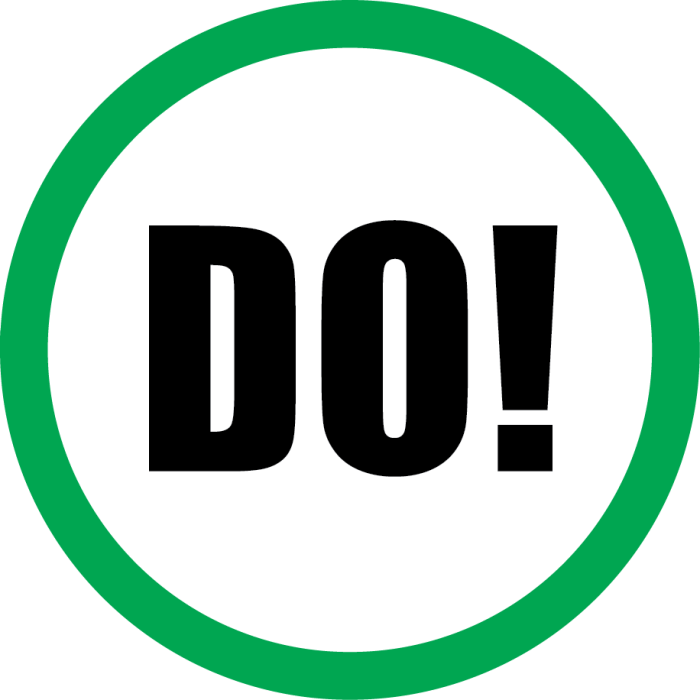
Deciding on something, whether it’s a small personal choice or a major life decision, often comes down to feeling confident in the path we choose. This confidence isn’t magically bestowed; it’s a skill that can be cultivated and strengthened. Understanding the link between self-confidence and decision-making empowers us to approach choices with greater assurance and resilience.Building self-assurance in our decision-making process is a crucial step toward overcoming indecision and embracing the path forward.
It’s not about eliminating all doubt, but about recognizing our capacity to evaluate options, weigh potential outcomes, and act with conviction. This process allows us to make choices that align with our values and aspirations.
The Relationship Between Self-Confidence and Decision-Making
Self-confidence plays a pivotal role in the decision-making process. Individuals with higher self-efficacy tend to approach choices with greater assurance and are more likely to persist through challenging situations. This confidence stems from a belief in one’s ability to successfully manage the demands of a particular task or situation. A strong sense of self-efficacy fosters a proactive approach to decision-making, enabling individuals to confidently navigate uncertainty and make choices that align with their goals.
Strategies for Building Self-Efficacy
Developing self-efficacy is a journey, not a destination. It involves consistently challenging yourself with progressively more difficult tasks, while celebrating and learning from both successes and setbacks.
- Setting Realistic Goals: Start with achievable goals. Gradually increase the complexity and scope of your goals as you build confidence. Small victories build momentum and reinforce the belief in your abilities.
- Seeking Support and Mentorship: Lean on trusted advisors, mentors, or friends for guidance and encouragement. Their perspectives can offer valuable insights and bolster your confidence.
- Practicing Mindfulness and Self-Care: Prioritizing your well-being through mindfulness and self-care techniques can help manage stress and anxiety, which often hinder decisive action. This creates a calmer and more focused mental state for decision-making.
- Focusing on Past Successes: Recall times when you successfully navigated challenging decisions. Reflect on the strategies you employed and the positive outcomes. Recognizing past successes strengthens the belief in your ability to handle future choices.
Positive Self-Talk for Decisive Action
Positive self-talk is a powerful tool for bolstering confidence. Replacing negative thoughts with empowering affirmations can significantly influence your decision-making process.
- “I am capable of making this decision.” This affirmation reinforces the belief in your ability to handle the choice.
- “I am confident in my judgment.” This statement acknowledges your capacity for sound reasoning and evaluation.
- “I can handle the outcome, whatever it may be.” This mindset acknowledges that even challenging outcomes are manageable, fostering resilience.
- “I will learn from this experience.” This fosters a growth mindset, recognizing that every choice offers opportunities for learning and development.
Tips to Boost Confidence in Decision-Making
These practical tips can be integrated into your daily routine to enhance your confidence in the decision-making process.
- Embrace the Process: View decision-making as an opportunity for growth and learning, rather than a source of anxiety. Acknowledge that making a choice, even a difficult one, is a testament to your courage.
- Seek Input Wisely: Don’t hesitate to seek input from trusted advisors. However, filter the advice to ensure it aligns with your values and goals.
- Recognize Your Strengths: Identify and leverage your strengths in the decision-making process. Focus on areas where you excel, and utilize them to support your choices.
- Develop a Decision-Making Framework: Establish a structured approach to decision-making, such as a checklist or a decision matrix. This creates a systematic process that instills confidence.
Developing a Decision-Making Mindset
Cultivating a robust decision-making process extends beyond understanding techniques and tools. It necessitates a shift in mindset, a conscious approach to how we perceive and handle choices. This involves embracing a proactive and learning-oriented stance, rather than viewing decisions as isolated events. A strong decision-making mindset allows us to approach choices with confidence and a clear understanding of our own capabilities.Effective decision-making is fundamentally linked to clear goals and priorities.
Without a defined direction, choices can feel arbitrary and lead to feelings of dissatisfaction. This section will explore how to develop a mindset that prioritizes clarity, realistic expectations, and continuous learning.
Setting Clear Goals and Priorities
Establishing clear goals is crucial for making sound decisions. Goals provide a framework for evaluating choices and ensuring alignment with desired outcomes. Without clear goals, decisions can feel arbitrary and lead to feelings of dissatisfaction. Prioritization is equally important, helping to focus energy and resources on the most impactful choices. Prioritizing allows one to focus on the essentials, streamlining the decision-making process.
Establishing Realistic Expectations
Expecting perfection in every decision is unrealistic. A realistic approach acknowledges that some decisions will inevitably yield less-than-ideal results. Acknowledging potential downsides and formulating contingency plans for unexpected outcomes are critical components of establishing realistic expectations. Understanding that not all decisions will be perfect fosters resilience and allows for a more adaptable approach.
Learning from Past Decisions
Analyzing both successful and unsuccessful decisions is essential for continuous improvement. Recognizing patterns in past choices and identifying contributing factors (both internal and external) allows for the development of strategies to avoid similar pitfalls in the future. A systematic review of past decisions, focusing on both the positives and negatives, builds invaluable experience.
Viewing Decision-Making as a Continuous Learning Process
Decision-making is not a static skill but rather a dynamic process that improves with experience and reflection. Embracing a continuous learning approach means actively seeking feedback, analyzing outcomes, and adjusting strategies based on the results. Continuous learning allows for adaptation and refinement, leading to progressively more effective decision-making over time. By treating decision-making as a continuous process of learning, we empower ourselves to become more skillful and confident in our choices.
Final Wrap-Up
Ultimately, making decisions, even difficult ones, is a journey of self-discovery and continuous improvement. By understanding the underlying reasons for your indecision, employing effective strategies, and building a strong decision-making mindset, you’ll find yourself empowered to confidently navigate life’s choices. This guide provides a roadmap to transform indecision into decisive action, paving the way for a more fulfilling and purposeful life.


